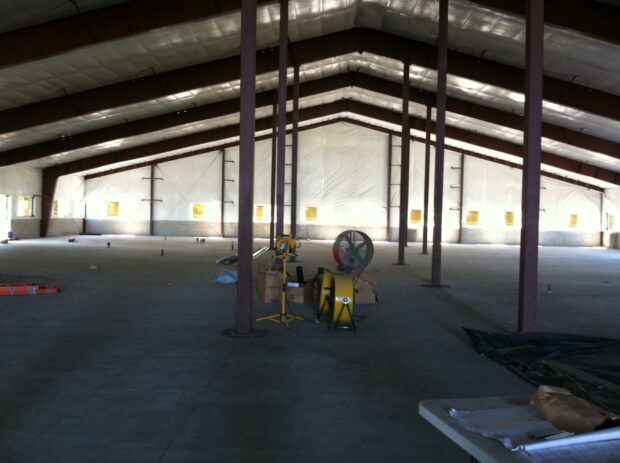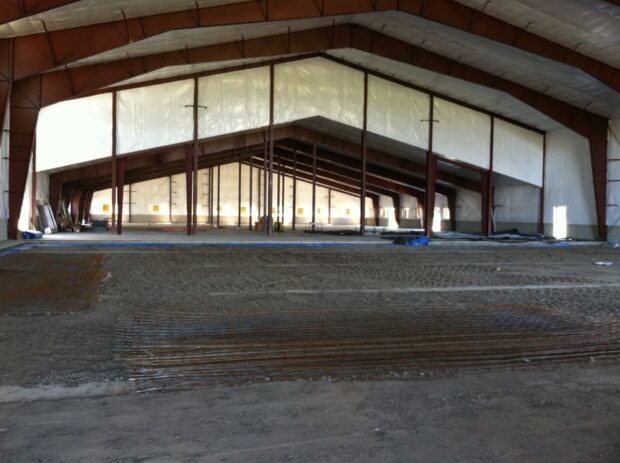MIDVALE — Administrators and students from a small western Idaho school district teamed up with a local business to help save taxpayers millions as they build a brighter future.
The unconventional construction project started when Rob and Nancy Roberts of R&M Steel in Caldwell donated a 24,200 square-foot steel building to the Midvale School District. Superintendent Jim Warren said the steel structure will replace the district’s existing secondary school — which was built between 1914 and 1930.
So far, district leaders have invested more than $500,000 in plant facilities funding they saved up over the past decade to erect the building and “rough it in.”
And when the new school year begins, Midvale students in residential home construction and woodshop classes will work with contractors to supply some of the labor to build the school.

Warren estimates the partnership and donations could drive the cost of the new building down substantially. Rather than bringing a $4.6 million – $4.8 million construction bond issue to voters, Warren said trustees are eying running a $350,000 plant facilities levy for five years to pay for the project.
Under that scenario, taxpayers would be on the hook for about $1.75 million — just 38 percent of Warren’s $4.6 million rough estimate.
The move also means district leaders will avoid having to exceed the two-thirds supermajority requirements needed to pass a construction bond. A simple majority of votes are all that would be necessary to pass a plant facilities levy.
“Initially somebody mentioned it was pipe dream,” Warren said. “But we’ve got a lot kids and a lot of parents who are excited about it. Now we’ve just got to get some more property owners excited about it as well.”
Warren and his team realize they are taking an unconventional approach to updating the district’s facilities for the 21st Century.
But he said the needs of today’s modern students demand it. The existing school still utilizes restrooms built in 1930. And the building leaves much to be desired in terms of wiring, connectivity, security and accessibility for the approximately 75 students it serves.
“With the additional education requirements coming down the pipe over the last 10 to 15 years, even for a school our size we are running out of room,” Warren said.
If voters approve a plant facilities levy in late August, district leaders would be looking at a four- or five-year project before the school is finished. However, students could begin moving in for partial occupancy somewhat sooner if the project goes well.

“What makes the project unique is it requires a lot of patience,” Warren said. “We’re a fiscally conservative community and our board’s whole thing is trying to do everything it could (to save and maximize resources).”
Residential home construction instructor Vic Mann said the project is a win-win for students and patrons.
“Our kids will get a tremendous amount of experience from framing and sheetrocking and insulating and doing all the finish work and the painting,” said Mann, who joined the Midvale district after a long career teaching and coaching football and wrestling at Boise’s Borah High School.
“I’ll be using students from sixth grade clear up through the seniors in high school.”
For safety and quality control reasons, students won’t handle the entire project. The plumbing and electrical work will be left to professional contractors.
But the chance for students to help build their own school shows how far the residential construction course has grown since the early days, when students’ major projects involved building sheds for community members.
“The work will help them a lot. It gives them a good leg up,” said Mann, adding that many of students enter a trade or work on family farms after graduation.
